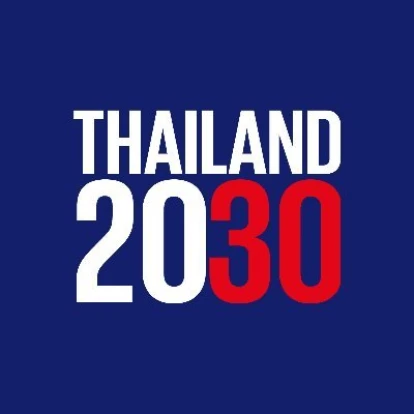The Talent shortage is a common challenge faced by many organizations globally. The demand for skills is at a record high in many industries. As economies continue to grow and technology advances, the demand for skilled workers will also continue to increase.
This talent shortage leads to a competitive job market, making it difficult for companies to attract and retain top talent. In this article, we go through key recruitment strategies organizations should put in place to navigate the talent shortage in 2024:
Leverage the Build / Buy / Borrow / Bridge strategy, for every single hire
The Talent shortage has placed competencies and skills at the center stage of the Talent Management strategy. Talent Acquisition tactics shall be carefully considered according to :
- The strategic competencies required to run the business.
- Existing pipelines of talents that possess these key competencies.
- The talent supply on the labor market
Once the organization has identified its strategic capabilities and the existing supply of talent to lead the business forward, organizations shall formalize their hiring needs.
Below are the main talent acquisition strategies that should be considered by organizations:
The Build strategy (Internal recruitment)
To limit the impact of the talent shortage on the overall business and increase employee engagement and retention, organizations shall prioritize the development of their internal workforce to gain the missing competencies and skills. Promotions shall be given in priority to high performers and high potential so the organization can thrive with its best people in the long term.
Benefits of Internal recruitment
- Enhance employee retention
- Reduce time to hire
- Reduce onboarding time and time to productivity
- Cost less than external recruitment
- Increased employee engagement
This strategy suggests that the organization is committed to long-term employee development as their existing employees may not be at the expected competency level. A choice shall be made to either groom talents with Individual development plans (IDPs) to the targeted job positions or to recruit externally talents who possess the required competency level for the role.
The Buy Strategy
The Buy strategy has been the main Talent Acquisition strategy used by organizations for decades. The advantage of this approach is that it can be deployed faster than the build (internal recruitment) strategy depending on the recruitment role your organization is seeking to hire.
The main drawback is that it often comes at a higher economic cost. New recruits tend to churn over more than long-term employees and may find it difficult to adapt to the company’s culture and its way of working. On the other hand, existing employees already have an internal network in the company, which takes years to build.
In addition, some sectors are subject to skills shortages, which makes it even more challenging for employers to find the right expertise aboard. The Talent shortage impacts a variety of industries globally. Some of the most impacted sectors such as The IT & Technology, Healthcare, and Manufacturing.
The Borrow strategy
Another option is to borrow talents, which means organizations may utilize a temporary workforce to fill their competency deficit. The advantage of such a strategy is that it is easier to find freelance contractors who can easily adopt a flexible way of working.
A strong disadvantage of this option is that these workers lack the internal network and often come with a higher cost. In addition, organizations shall use the borrow strategy carefully, to not outsource competencies as they see as their competitive advantage or strategic capabilities.
As a rule of thumb: strategic capabilities shall be built internally. Secondary capabilities can be outsourced, if the following conditions are gathered:
- The recourse of the borrowed workforce is clearly defined in time.
- There is a plan in place to transfer knowledge and collect data.
- There is a dedicated budget allocated to the temporary workforce.
The Bridge Strategy
The final pillar of the talent strategy consists in allowing employees to increase their breadth of competencies. This strategy is particularly valid for roles that are at risk of becoming redundant within the organization.
Extensive Learning and development shall be provided in adjacent areas to employees, so they can acquire new competencies and safeguard their employability within the company.
To navigate the talent shortage, organizations must weigh the pros and cons of using build / buy / borrow strategy. Choosing the right option shall be done jointly with the top management (c-Level) of the organizations, the Talent Management & Acquisition teams, as well as department manager heads.
Redefine your hiring requirements
Expanding the talent pool means looking beyond traditional recruitment methods to reach out to a wider range of candidates. In a situation of shortage in the labor market, you are fighting over the same candidates, in a very limited talent pool. Here are some must-have initiatives your organizations should consider to expand and create new talent pools.
Leverage transferable skills to tap into new talent pools
Skills are now driving talent mobility. If you are navigating in an industry with a limited skilled workforce, the answer is to tap into a similarly skilled workforce in a different industry. Unlike industry experience, soft skills are transferable to other industries. A study from Mc Kinsey (July 2022) highlights that mobility between industries is high Globally. Just 35 percent of those who quit in the past two years took a new job in the same industry. In finance and insurance, for instance, 65 percent of workers changed industries or did not return to the workforce. In the public and social sector, the exodus was even greater, at 72 percent.
If you are limiting your talent search to your industry sector only, you are cutting yourself from a massive pool of potentially qualified candidates for your organization.

Re-evaluate your job description requirements
Below is a list of traditional requirements we see in job descriptions that you should consider removing to improve your talent pipeline:
- Industry-specific experience requirements
- Geography specific requirements
- Educational experience
- Years of experience and seniority
Reach out to underrepresented groups such as women, minorities, and veterans, who may not have been previously considered for certain roles. This not only helps to increase diversity in the workplace but also helps to tap into a pool of skilled and talented individuals who may not have been considered otherwise.
Hire for soft skills when technical skills are scarce
When technical skills are scarce in the labor market, you will fight over the same talent pool with your competitors. Instead, put an emphasis on soft skills and acquire a workforce that is agile and that matches your behavior and culture requirements.
Click here to know more about why soft skills are required in recruitment.
Build your employer's brand
One effective recruitment strategy is to focus on building a strong employer brand. This means creating a positive reputation and image that will attract top talent to your organization. This can be achieved through various means such as highlighting the company's culture, values, and mission, sharing employee testimonials, and showcasing the company's achievements and successes. By building a strong employer brand, organizations can attract top talent who are looking for a company that aligns with their values and career goals.
Employer branding is a powerful tool that organizations can use to attract and retain top talent in the face of a talent shortage. By creating a positive reputation and image for the company, organizations can appeal to top talent who are looking for a company that aligns with their values and career goals. Here are some ways organizations can use employer branding to tackle talent shortage:
- Highlight company culture, values, and mission: By communicating the company's culture, values, and mission, organizations can attract top talent who are looking for a company that aligns with their personal beliefs and values. This can be done through various means such as company websites, social media, and recruitment materials.
- Share employee testimonials: Employee testimonials can be a powerful tool to showcase the company's culture and values. These testimonials can be shared through various means such as company websites, social media, and recruitment materials.
- Showcase company achievements and successes: By showcasing the company's achievements and successes, organizations can attract top talent who are looking for a company that is successful and innovative. This can be done through various means such as company websites, social media, and recruitment materials.
- Offer competitive compensation and benefits: Offering competitive compensation and benefits packages can help attract top talent who are looking for a company that values and rewards its employees.
- Foster a positive and inclusive work culture: By fostering a positive and inclusive work culture, organizations can attract top talent who are looking for a company that values diversity and inclusivity.
- Use social media: Social media can be a powerful tool to promote the company's employer brand. Organizations can use platforms such as LinkedIn, Twitter, and Instagram to showcase the company's culture, values, and achievements, and to reach a wider audience of potential candidates.
- Networking: Attending industry events, job fairs, and networking events can help organizations to promote their employer brand and connect with potential candidates.
By implementing these strategies, organizations can create a strong employer brand that will attract top talent in the face of a talent shortage. Employer branding can be a powerful tool for organizations to attract and retain top talent and can help them to build a highly skilled and motivated workforce that is capable of meeting the challenges of the future.
Rethink your HRTechnology stack to tackle the talent shortage
Finally, organizations can also tackle talent shortages by choosing the right tools in the HRTech market today.
- Gather your talent pool in a single system.
- Make skills your filter to search candidates
- Leverage pre-employment assessments to collect candidate data beyond resumes
About Huneety
Huneety is Southeast Asia Talent sourcing platform connecting talents to opportunities. We help organizations navigate talent shortages by creating new talent pools of qualified applicants. With Huneety you can quickly find, assess, and select the right talents according to your unique skills, behaviors, and cultural fit requirements.





